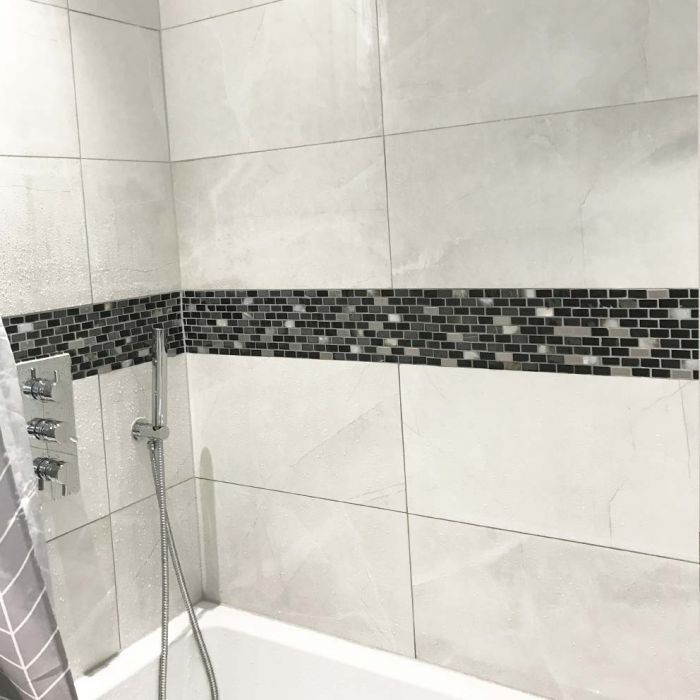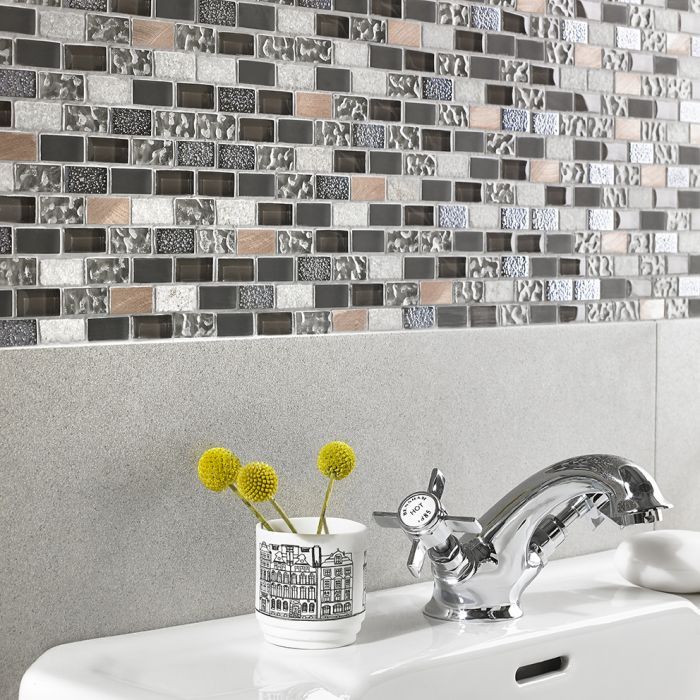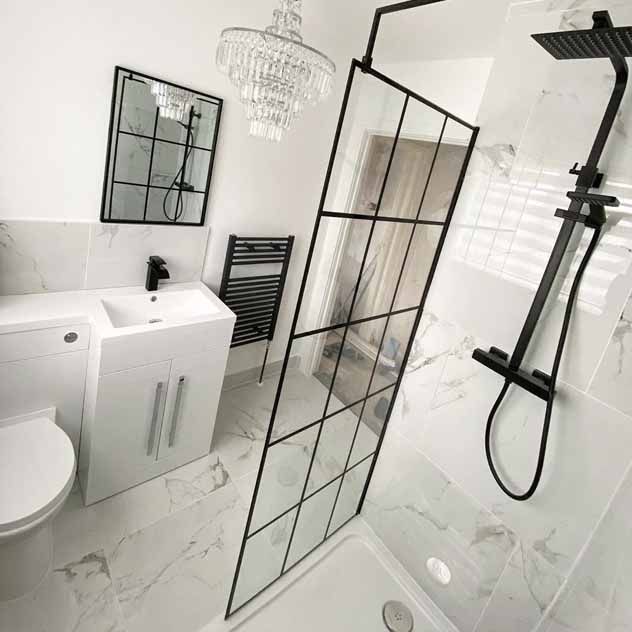
Water in the home is part and parcel of daily life. It’s what we use in our kitchens and bathrooms all the time. But we need surfaces in place that can cope with it.
Even once these are in situ, there is still the potential for issues to come about due to things like limescale.
In our latest blog, we take a look at tiles we recommend for water-exposed areas of the home and identify which tiles are best suited for areas potentially affected by limescale.
What is limescale?
Limescale is a hard, chalk-like deposit that builds up in areas with high exposure to water, particularly hot water. It is predominantly made from calcium carbonate.
We often think of limescale build ups as being something that happens predominantly in the kitchen. If you pop the lid of your kettle open and took a look inside (please don’t do this straight after boiling it!), then you may well see a build-up of limescale within.
Limescale is commonly a white or light grey substance, but it can build up in a pink or a reddish-brown shade too.
Where does it build up?

Areas with high water exposure can be susceptible to limescale build ups. As well as appliances such as kettles, there is a chance that limescale can build up on surfaces too.
This is sometimes problematic in bathrooms, with tiling around showers, baths and sinks particularly susceptible to limescale build ups.
There is also the possibility of limescale building up on kitchen tiles, particularly in splashback areas.
Which tiles can I use against it?

It’s harder for limescale to build up on tiles with glossy, smooth finishes. These are generally not porous, meaning the hard water doesn’t get into the tile as effectively and doesn’t allow the unwanted limescale to generate.
We therefore recommend any tile from our bathroom tiles range that comes with a glossy finish. The composition of these tiles means that hot water is less likely to bring about the kind of unwanted limescale build ups you are trying to avoid.
Tiles with higher levels of porosity are less suitable for high water areas. If deployed in areas where they encounter water, they can be susceptible to limescale build ups.
It’s also important to make sure that water doesn’t seep through any gaps. Make sure that you take a look through our adhesives and grouts and our sealers and cleaners to help avoid this.
What should I do if I get limescale build ups?
Many people want to know how to remove limescale from shower tiles, and the longer limescale is left untreated, the tougher it is to shift. So if you do see limescale on your tiles, it is better to get this sorted sooner rather than later.
The best way to do this is with PH neutral cleaner and give your tiles a once over every so often regardless of their condition. If you are faced with a solid limescale build up, then a mix of white vinegar and water can be applied and help to get rid of the unwanted build up.
Shop for tiles at Stone Tile Company
We hope you have found this to be a useful blog and picked up a few tips on how to manage tiles in water-exposed areas.
Be sure to take a look through our full collection of tiles available, and find the perfect addition to your home. You can pick up wall tiles and floor tiles, as well as our tiling accessories.
Take a look too at our delivery options, and if you have questions, simply contact our team.







